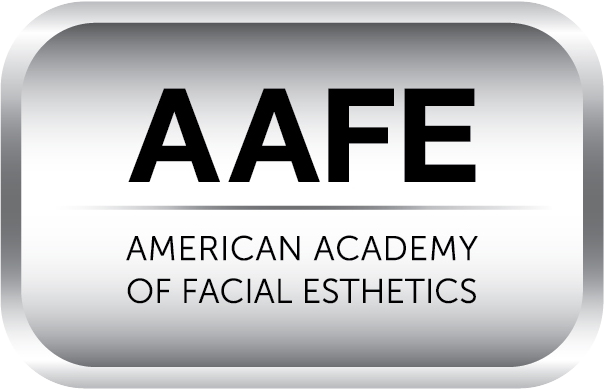Invisalign Is an Option for Teeth Straightening

In need of teeth straightening treatment? This is one of the most common things that general dentists offer, as it helps to improve oral health and appearance, all while boosting one's confidence and self-esteem. One popular option is Invisalign®, which are clear aligner pieces that cover the top, bottom, or both arches in the oral cavity. These pieces help to straighten the teeth over time while allowing for discreetness. Continue reading to find out when Invisalign® is a good option for teeth straightening.
Invisalign® for teeth straightening
Below is a quick overview of Invisalign®, including how the treatment process works and why it is a good option for standard teeth straightening cases. Reviewing this information may be helpful to individuals who are considering undergoing treatment.
The treatment process
Any teeth straightening treatment process will involve an evaluation to start. The general dentist will try to determine what the most suitable type of treatment is based on the patient's teeth, jaw, and bite. The evaluation may involve x-rays, physical examinations, and scans.
If Invisalign® is the chosen treatment, the teeth will be scanned and the images will be sent to a dental lab. The dental lab will custom-create the entire series of clear aligners based on the images and technology that allows for a prediction of the shift. Every couple of months, the general dentist will check the progress of the shift and then provide the next aligner in the Invisalign® set.
For the best teeth straightening results, general dentists recommend wearing the aligners for at least 22 hours a day and only removing them for oral hygiene and eating. This is crucial as it will produce the best results and avoid time delays in the process.
Of course, it is also key to brush and floss every day as usual. When it comes to Invisalign®, if brushing is not possible immediately after eating, it is highly recommended to at least rinse before re-inserting the aligner. This ensures that left behind food debris does not get stuck in the aligners, which can create foul odors and bacteria build-up.
Standard teeth straightening
Invisalign® is typically an effective teeth straightening treatment option for individuals with standard problems. For example, minor to moderate crowding or crookedness can easily be addressed with Invisalign®. However, more severe problems that involve bite issues may require more in-depth treatments such as braces or headgear. In some cases, the dentist may suggest braces first and follow with a few months of Invisalign.
The technology of Invisalign® relies on just one small plastic piece, which is why it is most suitable for standard teeth straightening problems. Because it is just one single piece, there is less pressure applied to each tooth, which means the treatment itself is not as effective for major problems.
Other things to keep in mind
When considering any type of teeth straightening treatment, it is necessary to understand a few things. First and foremost, the time commitment is considerably large. Even for individuals who undergo Invisalign, it will be necessary to visit the dentist quite a bit for check-ups and transitioning to the next set. It is good to know that even if a timeline is set in place at the start of treatment, the entire process can be delayed. The teeth shift at their own pace, meaning that the end goal is the placement of the teeth, as opposed to a set timeline. Other factors that may affect the timeline include discipline with wearing the aligners and if appointments are not maintained.
Another important thing to keep in mind is that Invisalign is not suitable for everyone. As stated earlier, some dental problems require more intense treatment when it comes to teeth straightening. Aside from the severity of the issue at hand, there are some factors, such as age, that may play a role in what makes someone a good candidate. It is rare that patients under the age of 16 undergo Invisalign because it requires a lot of discipline with oral hygiene and wearing the aligners at all times.
Talk to a general dentist today
When needing to undergo teeth straightening treatment, the best thing to do is consult with a general dentist. An evaluation can be done to determine the most appropriate treatment route, whether that be Invisalign® or an alternative option like braces. Any questions or concerns about teeth straightening and what is involved in standard cases can be appropriately addressed by the dentist. To learn more or to get scheduled for an appointment, reach out today,
Request an appointment here: https://drcalldental.com or call Dr. Call Dental Center at (706) 425-6240 for an appointment in our Dalton office.
Check out what others are saying about our services on Yelp: Teeth Straightening in Dalton, GA.
Related Posts
Dental bonding is a quick and effective dental procedure that can help transform your smile. During this treatment, our team applies a tooth-colored resin material to your teeth, hardening it with a special light and shaping it to fit your unique dental needs. Dental bonding can effectively treat various cosmetic issues and help you achieve…
Dental bonding can be an effective treatment option if you have chipped, cracked, or discolored teeth. It offers a minimally invasive approach to helping you achieve a brighter, more confident smile. However, before you pursue dental bonding to transform your teeth, there are a few things you should know.Dental bonding, also known as composite bonding…
Dental bonding is a versatile and minimally invasive cosmetic procedure that can address various dental imperfections. This procedure, involving the application of a tooth-colored resin to restore or enhance teeth, offers patients a simple and cost-effective solution for achieving a brighter, more uniform smile. Dental bonding is ideal for repairing minor dental flaws without extensive…
Dental bonding utilizes resin compounds to create a new tooth surface, potentially covering blemishes and other imperfections. However, bonding can be used for more than just hiding stains. Many dentists use it for a wide range of issues due to its many benefits, including its simplicity, adaptability, and price accessibility for most patients.Dental bonding has…


